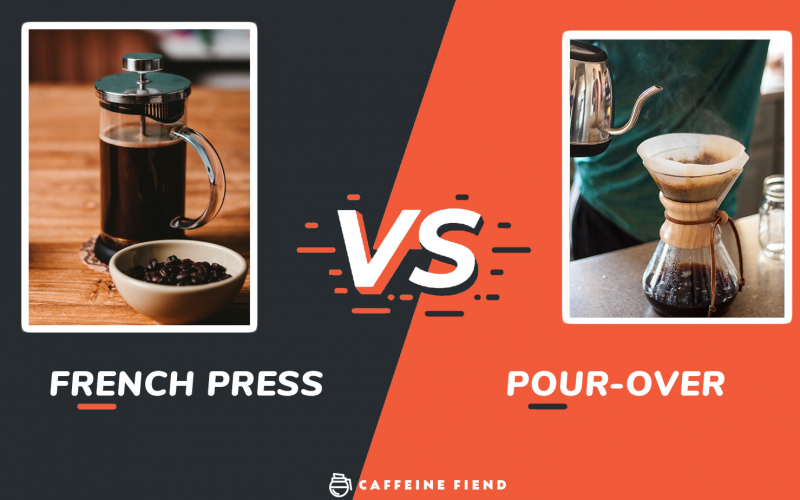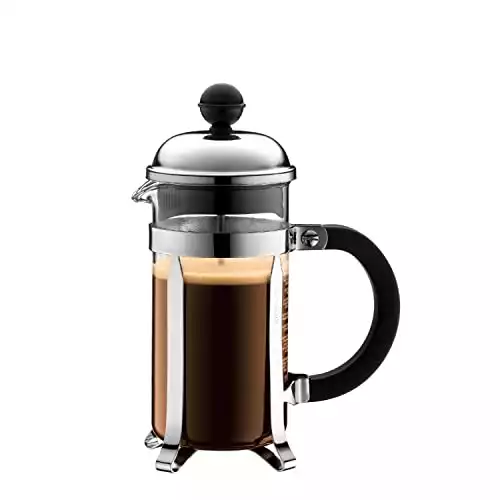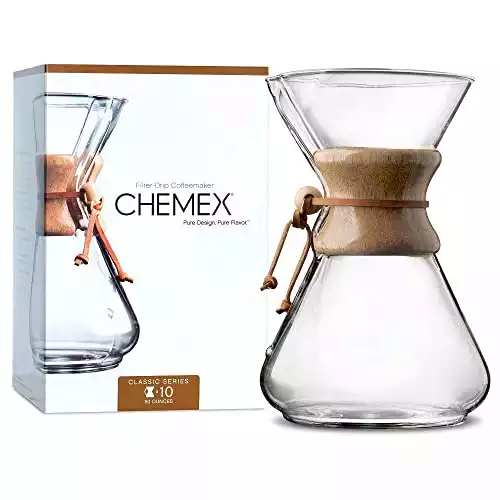French press coffee is great—creamy, rich, and bold.
Pour-over coffee is also great—light, delicate, bright, and acidic.
But which brewing method is the best?
Of course, it depends. But chances are that you—my fellow coffee drinker—will have a strong preference for one of the other.
It all comes down to your tastes.
If you’re someone who enjoys making coffee at home, then at some point or another you’re going to want to take your coffee game to the next level.
Below we’re going to compare both methods to determine which produces the best coffee, is better suited to your lifestyle, and is overall easier to make and more likely to check all of the boxes for your go-to morning cup of joe.
So heat your water and grind up your beans, in the following paragraphs we’re going to get go deep and we gear up for the ultimate showdown of caffeine melodrama. French press or pour over – which one is the go-to?
French Press vs Pour-Over Coffee at a Glance
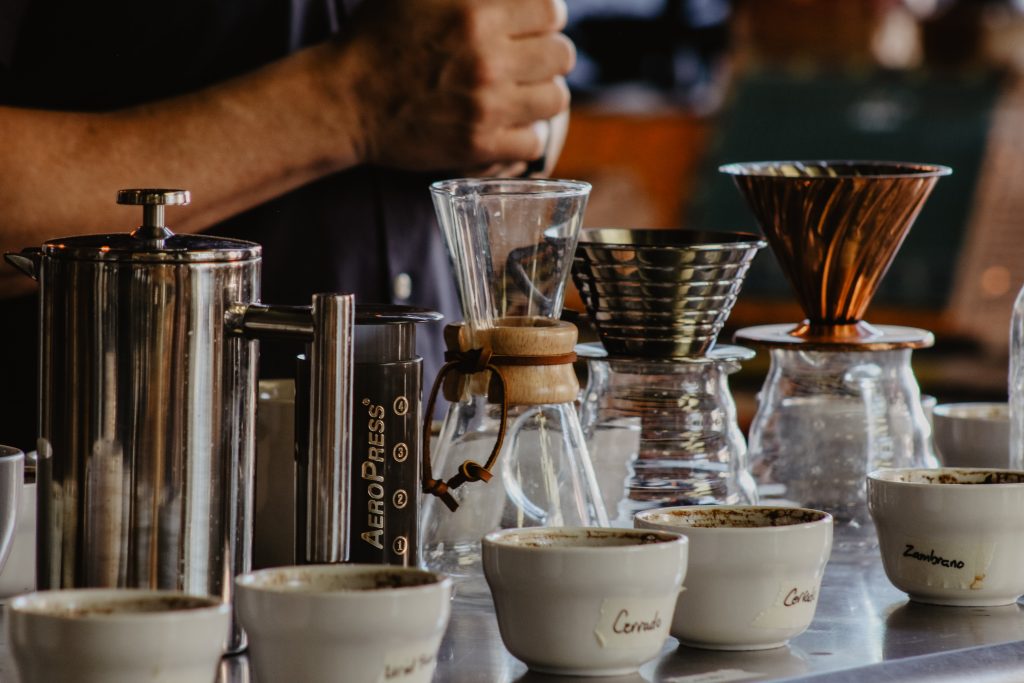
Before we get too far down the rabbit hole, let’s start with a basic lesson.
What makes these two coffee brewing methods different? And what makes them the same?
First, here’s what’s the same:
- Manual coffee brewing process
- ~4 minute total brew time (not counting heating water, etc)
- Slightly more involved than automatic drip coffee makers
Here’s the ELI5 comparing pressed coffee with manual drip coffee:
| French Press | Pour Over | |
|---|---|---|
| Details | – Immersion brewing – Grounds are steeped and pressed – Permanent, reusable mesh filter (stainless steel) – Maintains coffee oils and sediment | – Percolation brewing – Grounds are extracted as fresh water flows through – Most common: Paper filters – Highlights citrus and acid flavor profiles |
| Coffee | – Rich – “Frothy” – Oily – Heavier, thicker mouthfeel | – Clear cup of coffee – Clean – Bright – Light |
TL;DR – Coffee lovers love both french press and pour-over coffee—but for different reasons.
Let’s look a bit more closely.
The Coffee (Taste, Flavor, & Mouthfeel)
Before we get into all of the nerdy science and stuff, let’s start with what matters most to the average coffee drinker—the flavor!
Obviously, both methods brew coffee.
Coffee tastes good.
But coffee comes in many different flavors and these two brewing processes are essentially at opposite ends of the spectrum.
Let’s compare french press vs pour over coffee:
| French Press | Pour Over | |
|---|---|---|
| Mouthfeel | – Thick – “Frothy” – Oily | – Decadent – Nutty – Earthy |
| Flavor Notes | – Thin – Crisp – Light | – Citrus / fruit – Floral / herbal – Acidity |
In both cases, the coffee-to-water ratio will play a factor. Using more water (or less coffee grounds) will result in a lighter cup regardless of the method.
And the actual tasting notes that you pick up will depend heavily on which coffee beans you’re brewing with.
Nevertheless, French press coffee will contain more of the natural oils of the coffee and thus the coffee will maintain many of those rich, bold, and intense flavors.
On the flip side, because the paper filter used in pour-over brewing will remove those oils, you’ll be left with the softer, more delicate, and complex flavors (even from the same coffee beans!)
The Brewing Process
Both of these devices highlight the joys of manual brewing.
For one, you get a huge amount of control over the finished brew.
Secondly, you get work closely and carefully to perfect the coffee—like a barista in your own home. This can feel a bit tedious if you’re time-crunched (or attention-starved) but it can be therapeutic, relaxing, and even meditative for some people who really enjoy the ritual.
Here’s what the brewing process look like, side by side:
| French Press | Pour Over | |
|---|---|---|
| Brew Time | – 4 minutes | – 4 minutes |
| Brew Attention | – Single pour | – 1-4 pours |
| Variables to Control | – Steep time – Coffee-to-water ratio – Water temperature | – Grind size – Filter type – Coffee-to-water ratio – Water temperature |
The French press brewing device consisting of a glass carafe and a fine-mesh steel filter attached to a plunger and lid. While its name is Franco-inspired, the modern French press was developed in Italy in 1929. Since its inception, it’s been an extremely popular method of brewing coffee in Europe, and in recent years has spread to the rest of the world.
One reason that this method is so revered by coffee aficionados has to do with the control it allows the maker during brewing. Few other methods allow the brewer to control all of the crucial variables such as steeping time, water volume, and water temperature, resulting in a complete manipulation of flavor.
Brewing french press is a simple brewing process; here’s how it works:
- Warm the french press with hot water (then dispose of water)
- Add the coffee grounds to the carafe
- Pour hot water over the grounds
- Steep — lets the grounds saturate in the water for 3-4 minutes
- Press — Push the plunger down, separating the wet coffee grounds from the finished brew
There are no filter choices or grind size options (always coarse grind!) to alter the physics of the steep and brewing science.
You have direct control over the outcome.
If your decision is based on ease of use, then French press is probably the winner.
On the other hand, pour over coffee offers a ton of variables—each can be tweaked to impact the final cup of coffee. This gives you a much higher level of control and precision.
But it’s a bit more complicated to brew.
There are several different ways of producing pour-over, but all of them utilize the same conical-shaped filter which then gets placed into a vessel, holder or container.
The containers themselves can range from a cheap plastic filter holder, all the way to the beautiful svelte Chemex carafe. Regardless of the type of kit you opt for, the cup of pour-over coffee is still complex and delicious.
The pour-over technique, though, is as simple as it is beautiful:
- Place the filter in the cone, dripper, or top half of the carafe
- Rinse the paper filter and carafe with hot water (dispose)
- Add coffee grounds to the filter
- Pour water and bloom — allow the grounds to expand for 60 seconds
- Additional pours in a concentric, circular motion saturating the grounds
- During each pour phase, let the water drip slowly through the grounds before pouring again
It allows for a fair amount of control and manipulation of the final flavor of the coffee but, unlike the French press, doesn’t give the brewer the option of deciding how long the coffee should steep for.
Instead, the coffee filter and grind size (medium-coarse or medium-fine, depending on the pour over device and filter) determine how long the water will saturate the grounds before dripping down into the carafe or mug.
So, the brewing method can take a bit more trial and error.
That being said, some people prefer the more straightforward nature of the pour-over. The resultant brew is smooth, easy to make, and, according to a vocal section of the internet, the best coffee around.
Brewing Costs & Equipment

| French Press | Pour Over | |
|---|---|---|
| Cost | – $24 – 99 | – $10 – 75 |
| Ongoing Costs | – N/A | – $5-10/mo – Filters |
So you’re thinking of taking the plunge (get it? get it?) and investing in a French press coffee maker. It’s certainly not a bad choice.
The French press is also ready to brew from initial purchase; there is no additional paraphernalia needed to get started. This is great for the environmentally conscious out there, as the French press does away with the need for disposable paper filters.
Instead, it can simply be washed and reused again and again.
Investing in one also won’t break the bank. A standard glass French press will cost around $24.99 depending on the size and the materials it’s constructed from. You can also find differently priced and differently constructed French presses such as stainless steel and ceramic models.
Besides a continuous stock of ground coffee, you won’t need anything else to brew.
Pour-over coffee comes in a few different flavors that range from about $10 for a basic plastic coffee dripper to upwards of $60 for a high-end (but damn beautiful) Chemex glass coffeemaker.
You’ll usually have to pony up for filters to make proper pour-over.
But if you’re looking to save a few extra bucks (or you’re thinking about the environment), you can invest in a reusable mesh or metal filter for just about any pour over coffee model.
Just know that it changes things.
One of the most critical parts of pour-over coffee is the filter and how it controls water flow. So if you make a swap—like say, picking up a Kone metal reusable filter—you’ll have to adjust your brewing process accordingly to make a perfect cup.
If you’re really against using paper filters but prefer the flavor and process of pour over, there are a few options out there that come with permanent filters or even cloth filters and are more eco-friendly.
In both cases, you don’t technically need any other equipment.
But, as every good coffee nerd would recommend, there are a few key things you should probably consider:
- Manual coffee grinder
- Digital scale and timer
- Gooseneck kettle (for pour over, specifically)
Each of these pieces of equipment will give you even more control over the coffee you brew and you’ll get to brag to your friends about how you grind your own beans and perfected your Chemex recipe down to the miligram.
Maintenance and Cleaning
| French Press | Pour Over | |
|---|---|---|
| Cleaning | – Manual cleaning (plunger) – Some plungers are not dishwasher safe | – Super simple (standalone cone dripper) – A bit difficult (Chemex) |
The French press is a little bit finicky to clean up, especially the lid and plunger which can’t be disassembled. Many models can be unscrewed entirely and you can actually clean each component individually, but that’s obviously a bit of a pain.
And some lids and plungers (depending on the materials) are not dishwasher safe, meaning you’ll have to manually clean them before popping the carafe in top rack.
Now don’t be too worried—cleaning up still isn’t a Herculean task. It just takes a few extra steps.
An easy way to clean it is to rinse out all the grinds and then fill the container with soapy water.
Insert the plunger and plunge it up and down several times until all the grinds have been washed out. Then simply rinse the carafe and the plunger and your French press is ready to go again.
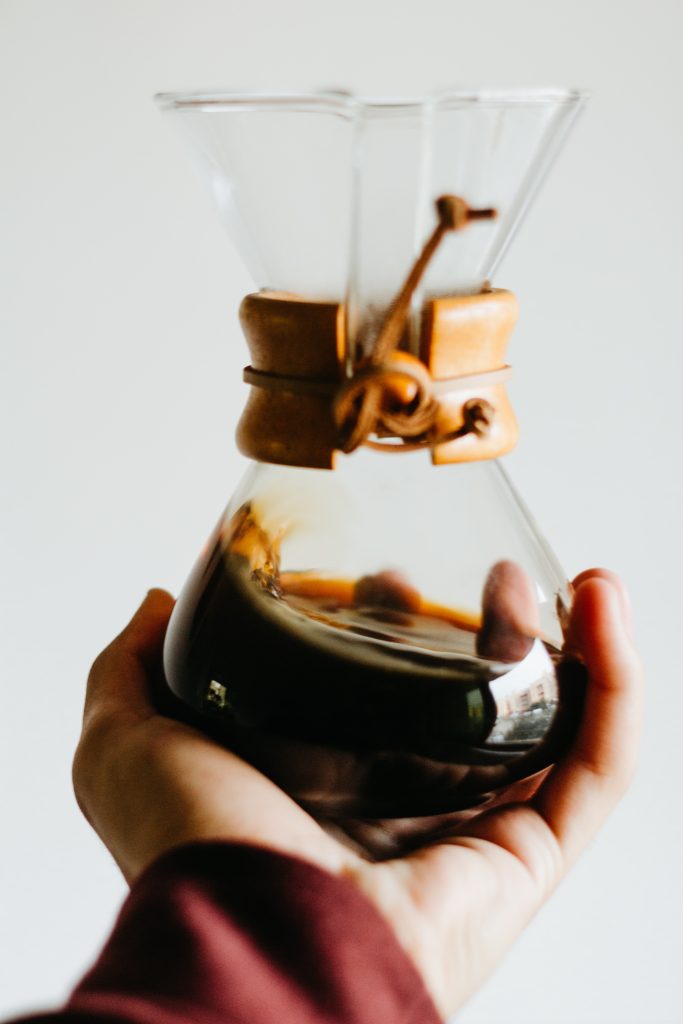
The pour-over ranges from ultra-simple to clean. For instance, a simple ceramic dripper like the Hario V60 can be popped right into the dishwasher and it’s done.
On the other hand, the Chemex requires a few extra steps. You’ll have to remove the wooden collar and leather tie before using the dishwasher. And, certainly, washing by hand can be a bit challenging because of the shape. (You’ll need a scrub brush with a long handle.)
French Press vs Pour-Over: The Final Showdown
Who comes out on top – the French press vs pour-over?
It’s not exactly definitive.
If you’re someone who prefers strong coffee with intense flavor, fragrant aromas, and a dark consistency, then the French press is undoubtedly the right coffee choice for you.
If, however, you prefer your coffee to be lighter, smoother and free from any coffee grinds, then pour-over has your name written all over it.
At the end of the day, it’s about personal preference, especially when it comes to two insanely popular methods of brewing coffee revered all over the world. That being said, if you’re still unsure, why not try both? It’s unlikely to break the bank, and you might just find that you love them both but for different reasons.
Choosing the Right French Press
It’s hard to go wrong when choosing a French press.
Nearly all models are formed and function in much the same way. Perhaps the most important consideration is the material.
Most of these devices are made of glass. This works great if you’re brewing a pot for 1-4 people and planning to drink it pretty quickly. But if you’re brewing for one and the coffee may sit in the carafe for a while, then you may want an insulated French press that will keep the coffee hot for longer.
Here’s our favorite pick:
And be sure to check out our full review of the best French Presses.
Choosing the Right Pour Over Coffee Maker
You have a bit more variety when it comes to choosing pour over devices.
On the one hand, you have the very basic (and sometimes cheap) drippers that sit on top of a coffee mug or carafe. On the other hand, you have all-in-one options to brew, hold, and serve.
Our top pick is the Chemex:
But if that’s not right for you, take a look at some of the other options.
For a single cup of coffee, you can’t go wrong with a ceramic dripper from Hario.
If you’re looking for quantity without breaking the bank, the pour-over from Bodum is the best bang for your buck.
Check Out More Brewing Methods
Still looking for the best method to make your new favorite cuppa?
Check out a few of our other breakdowns:

